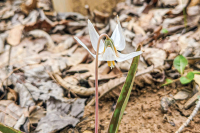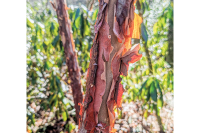Another deadly exotic
Experiments conducted by a multi-disciplinary team of researchers from the U.S., Canada and Germany strongly suggest that the fungus, Geomyces destructans, which causes White Nose Syndrome in bats, is a recent invasive from Europe. WNS was first discovered in the U.S. in 2006 near Albany, N.Y. Since then it has spread to 19 states (as far south as Alabama and as far west as Missouri) and four Canadian provinces. It has killed an estimated 5.7 million bats.
WNS was named because of a white fungus grows around the muzzle, ears and wing membranes. The fungus causes bats to wake up more often during hibernation, which in turn depletes their fat reserves and leads to starvation and death.
Researchers from the University of Winnipeg and the Western College of Veterinary Medicine (WCVM) reported their findings on April 9 in the online edition of the Proceedings of the National Academy of Sciences. Scientists were puzzled because bats from Europe had been discovered with WNS but it wasn’t lethal. To try and learn what was going on, disease-free bats were collected from caves across Manitoba and brought to WCVM for study. A third of the bats were inoculated with Geomyces destructans (Gd) from Europe; a third was inoculated with the fungus from North America and a control group was kept fungus-free.
Both inoculated groups of bats soon began showing the same telltale signs of WNS. The bats with WNS were emaciated and near death weeks before the 120-day experiment was scheduled to end and were euthanized. The control group was all healthy after the 120 days.
The research led scientists to believe that the European bats had evolved along with the Gd and developed some kind of immunity, while bats in North America had never been in contact with the fungus until that outbreak in 2006.
Researchers say the study provides a small glimmer of hope. If enough North American bats survive WNS, they will, hopefully, develop some immunity like their European cousins. But it appears to be a race against time as this deadly disease races across North America.
Related Items
More studies are planned to try and discover how European bats combat the fungus, in hopes of finding a way to slow the spread of WNS in the U.S. and Canada. Some people think of bats as scary things. But a world without bats could, actually, be much scarier. One little brown bat weighing around one ounce can eat up to 1,200 insects per hour. And the little brown is but one of 45 species of bats found in the U.S. In one study, 150 big brown bats surveyed throughout one summer were reported to have eaten enough adult cucumber beetles to prevent the hatching of more than 30 million cucumber beetle larvae. Researchers in the U.S. have estimated that the current die-off of bats in North America will cost the agricultural industry $3.7 billion dollars annually.
(Don Hendershot is a writer and naturalist. He can be reached a This email address is being protected from spambots. You need JavaScript enabled to view it..)













